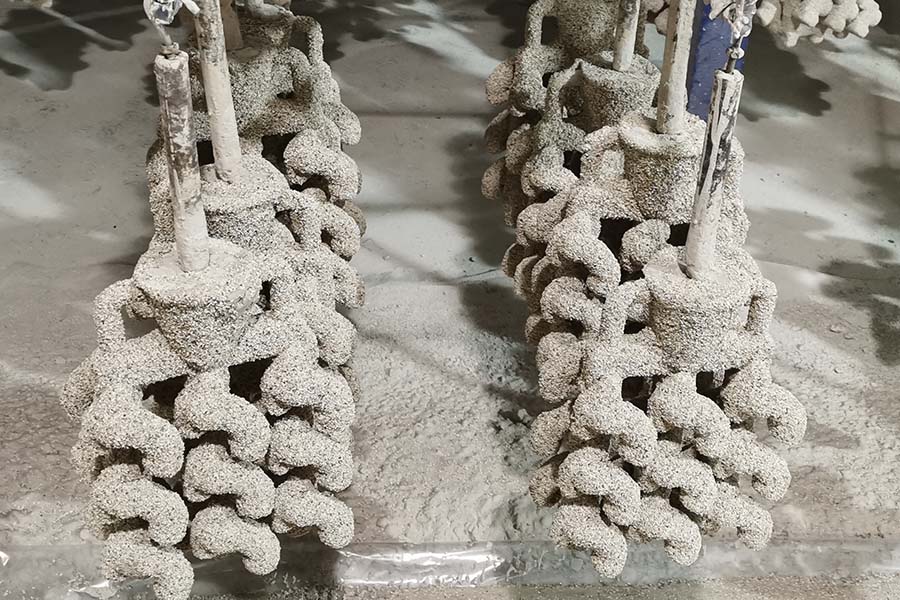Six basic steps of casting
1. Mold cavity is produced having the desired shape and size of the part. Takes shrinkage into account. Single-use or permanent mold
2. Melting process. Provides molten material at the proper temperature
3. Pouring technique. Molten metal is poured into the mold at a proper rate to ensure that erosion and or defects are minimized.
4. Solidification process. Controlled solidification allows the product to have desired properties. Mold should be designed so that shrinkage is controlled
5. Mold removal. The casting is removed from the mold. Single-use molds are broken away from the casting. Permanent molds must be designed so that removal does not damage the part
6. Cleaning, finishing, and inspection operations. Excess material along parting lines may have to be machined
1. Mold cavity is produced having the desired shape and size of the part. Takes shrinkage into account. Single-use or permanent mold
2. Melting process. Provides molten material at the proper temperature
3. Pouring technique. Molten metal is poured into the mold at a proper rate to ensure that erosion and or defects are minimized.
4. Solidification process. Controlled solidification allows the product to have desired properties. Mold should be designed so that shrinkage is controlled
5. Mold removal. The casting is removed from the mold. Single-use molds are broken away from the casting. Permanent molds must be designed so that removal does not damage the part
6. Cleaning, finishing, and inspection operations. Excess material along parting lines may have to be machined

 русский
русский



